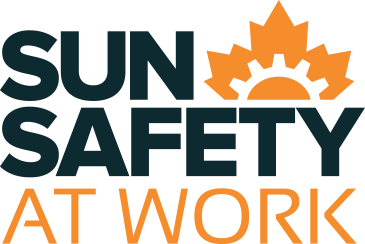Glossary beginning with D
D
- Daily assessment search for term
-
The daily assessment is the third of three risk assessment steps we recommend for undertaking a comprehensive sun safety risk assessment for either solar UV radiation or heat stress. This relates to assessment procedures (for example, for heat stress these are wet bulb globe temperature or humidex) that can be conducted daily and that will determine whether more control measures are needed based on current environmental conditions.
- Dermatitis search for term
-
Dermatitis refers to inflammation of the skin.
- Dermatology search for term
-
Dermatology is a branch of medicine concerned with diseases of the skin. A dermatologist is a specialist in dermatology.
- Dermis search for term
-
Dermis is the skin.
- Design control search for term
-
Design control is often included as an engineering control. It involves two considerations that come before other physical controls. Elimination of the hazard – does an initial assessment of the hazard indicate that it can be removed from the workplace? This can include isolating the hazard in time or space. The second consideration is substitution of a lesser hazard.
- Do-Control Measures search for term
-
The Do-Control Measures step of the Model Sun Safety Program is the third of the six steps. It is based on the Plan-Do-Check-Act model for improvement. Based on the outcomes of the Plan step, in the Do-Control Measures step, control measures are identified and implemented according to the hierarchy of risk controls.
- Do-Support search for term
-
The Do-Support step of the Model Sun Safety Program is the fourth of the six steps. It is based on the Plan-Do-Check-Act model for improvement. The Do-Support step of the program provides activities that support a workplace to implement control measures and help to manage risks from workplace hazards.
- Documentation search for term
-
Documentation refers to record-keeping for elements of a sun safety program. Documentation can take many forms, from a supervisor’s notebook to training records to audit reports. Documentation is not itself ‘due diligence’ unless a regulation calls specifically for a record. However, documentation is one way to provide proof of due diligence. For example, the training is the due diligence, the training records are the evidence of due diligence. Documentation is part of the Check step of the Model Sun Safety Program.
- Dose search for term
-
See Radiant Exposure.
- Dry bulb temperature search for term
-
The dry bulb temperature is the reading from a simple thermometer that gives the ambient air temperature. It is one of three temperatures that combine to produce the wet bulb globe temperature (WBGT).
- Due diligence search for term
-
Due diligence is commonly expressed as ‘taking every precaution in the circumstances to protect a worker.’ Another common phrasing is to ‘take all reasonable care’ or to ‘do everything reasonably practicable’ Due diligence can be a general duty of an employer or an individual as well as a legal defence. Even if an occupational health and safety act and its regulations say nothing about sun safety, a person with a general duty to be duly diligent would have a legal obligation to consider engaging in sun safety activities that are appropriate in the circumstances.
- Duty search for term
-
A duty is an obligation that is mandatory. Duties found in occupational health and safety statutes are called statutory duties. Different people have different duties (for example, employers, supervisors, or workers). A general duty is a broad, overarching duty to take care that is not dependent on specifications in the regulations. A regulation-dependent duty in an occupational health and safety statute has its content clearly defined in the regulations (often ‘prescribed’ is the term used to mean the details are found in the regulations). Some duties are ‘express’ duties meaning that they are defined very clearly in the legislation. Other duties are implied. For example, an employer’s duty to ensure that supervisors are competent contains an implied duty to train supervisors. In comparison, the decision to exercise a ’right’ is at the discretion, or option, of the right-holder.

